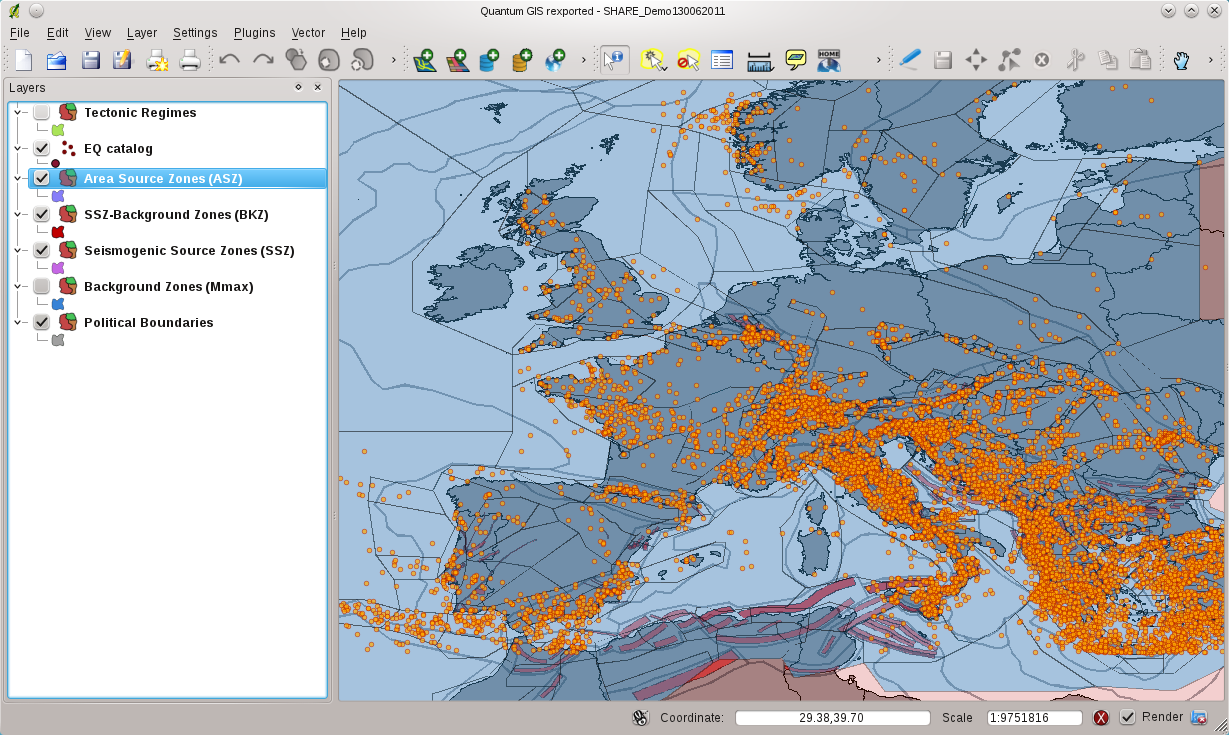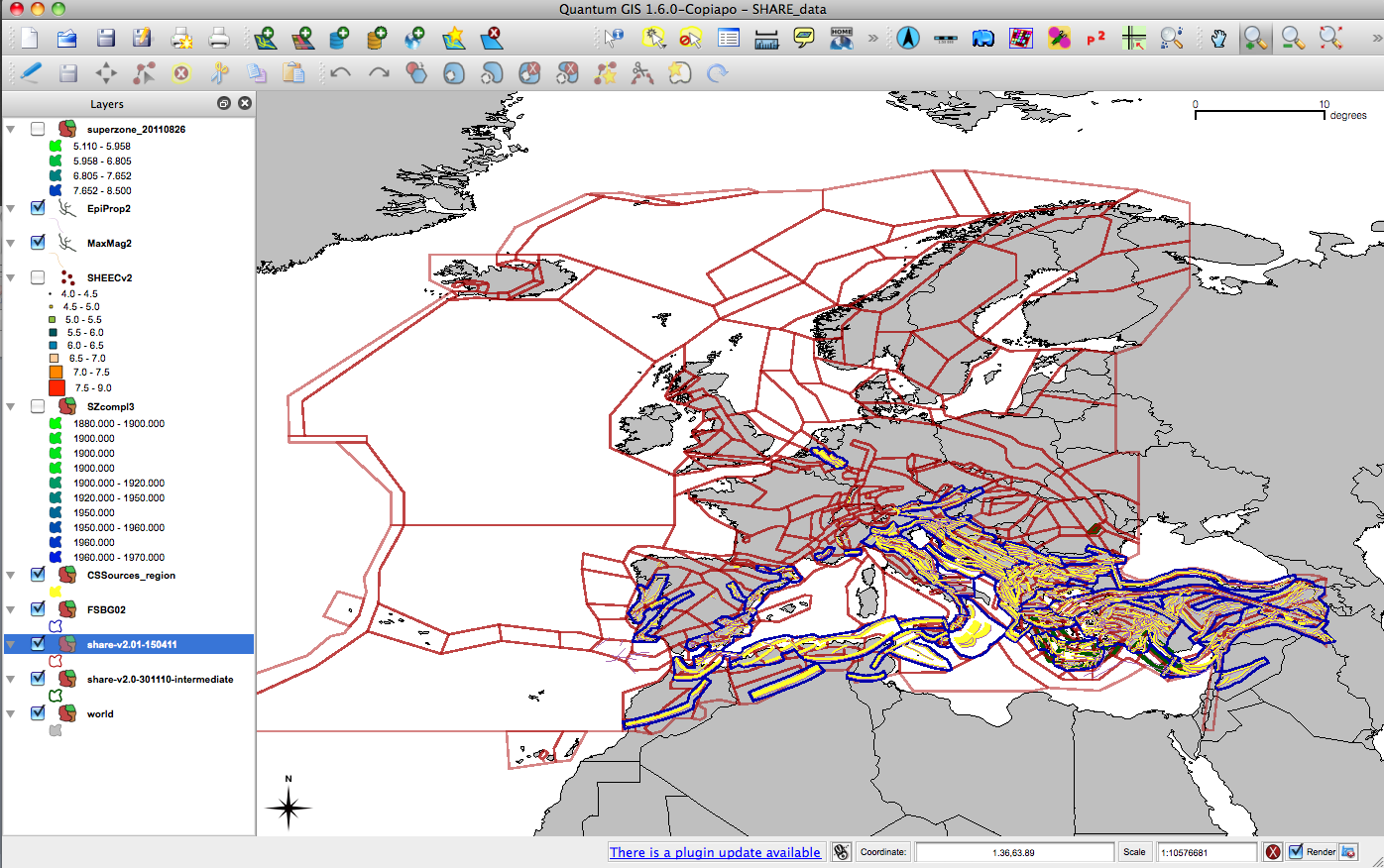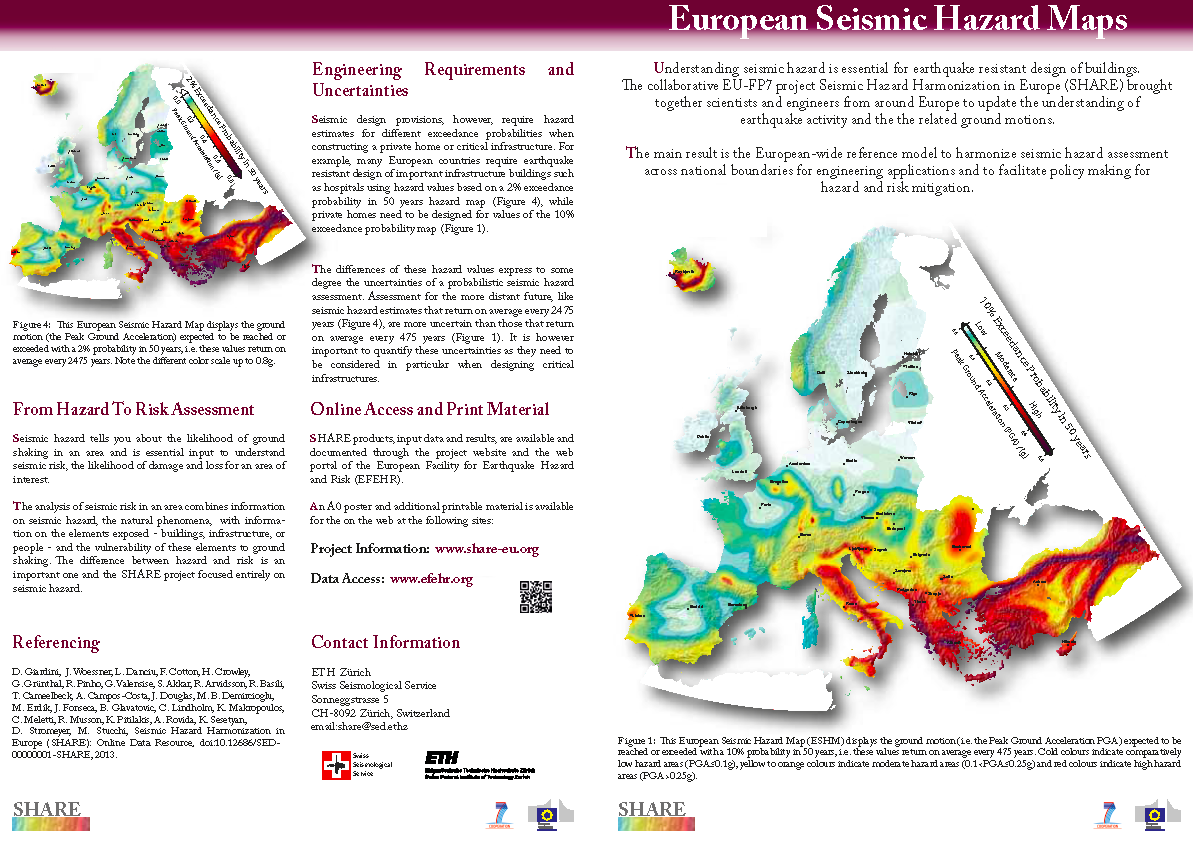Task 6.3: Source Model Toolkit and Computational Engine OpenQuake (SED-ETHZ)
Overview
SHARE addresses the entire PSHA process and is required by contract to provide a open-access to data and results. To ensure full availability, a necessary obligation is the ability to reproduce each single step of the PSHA process which involves derivation of parameters using software.
SHARE therefore develops a tool called Source Model Toolkit (SMT) with wich the hazard model developed within WP3-5 is generated and that produces a custom made input to the open source OpenQuake software for hazard and risk assessment that is mainly developed within GEM, but applied within various contexts, such as that of SHARE.
OpenQuake
OpenQuake is a state-ofthe-art, open source software that is mainly written in the Python programming language, for calculating seismic hazard and risk at any scale. It makes use of a number of other, independent, open source projects such as OpenSHA. OpenQuake is a unique software for a number of reasons:
- It combines deterministic and probabilistic hazard and risk calculations within a single software;
- The development is “open source”, and takes place on a public repository that encourages collaboration on a single code base (through a distributed version control system);
- All input and output follow an evolving data interchange format called NRML (Natural hazards Risk Markup Language);
- The code is engineered in such a way that it can be used on a single processor laptop as well as on a cloud of computers.
OpenQuake is under continious development, but its version 0.3 is already used in PSHA, for example, to calculate national seismic hazard maps in Ecuador. See also http://openquake.org
Source Model Toolkit
The Source Model Toolkit (SMT) is developed to computationally generate the hazard model for a regional scale project such as SHARE. The SMT aims to provide a platform with which an experienced scientist can prepare a moment-balanced hazard model to be submitted to the OpenQuake engine for hazard computations. Up-to-date, the SMT is tailor-made for SHARE as a standalone application based on the open source GIS-software QGIS and Python.
Current builds can be downloaded from https://github.com/feuchner/seismicsource-toolkit, yet data is only available for SHARE participants.


Snapshot of QGIS platform with preliminary data of SHARE visible.


